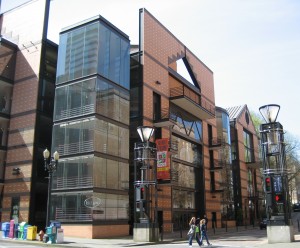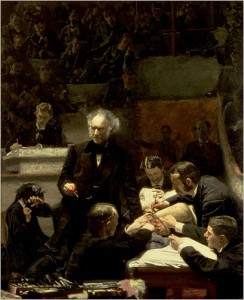
“While you’re catching up on weekend papers,” our blogging compatriot Mighty Toy Cannon of Culture Shock writes, “I’d be interested in your comments on the Oregonian editorial regarding the renovation of the Schnitz and the possible enclosure of the Main Street Plaza (Saturday, August 30).”
As Mighty Toy points out, the editorial got lost not only by running on a Saturday but also because it was buried beneath the flurry of news about vice presidential nominee Sarah Palin (pre-grandma version) — and wasn’t that an artfully worded baby announcement, by the way.
The editorial’s gist is this: Even though most Portlanders could care less about the symphony and opera and ballet, these things are important to our economy and our sense of civic pride. The city’s most prominent performance space, downtown’s Arlene Schnitzer Concert Hall, is in need of big fixes — at least $10 million, maybe a lot more — partly because its acoustics are subpar, and it’s used 60 percent of the time by the Oregon Symphony, a group for which acoustics are exceedingly important.
 So far so good. But then the editorial gets down to what really seems to excite its author: the possibility of reviving the idea of some sort of bridge between the Schnitz and the theater building that houses the Newmark and Dolores Winningstad theaters right across Main Street. It’s an idea that was part of the original 1982 blueprints for the Portland Center for the Performing Arts but was scrapped for financial reasons. And it would include permanently blocking off Main between Broadway and Park Avenue to create a plaza that would connect the two buildings.
So far so good. But then the editorial gets down to what really seems to excite its author: the possibility of reviving the idea of some sort of bridge between the Schnitz and the theater building that houses the Newmark and Dolores Winningstad theaters right across Main Street. It’s an idea that was part of the original 1982 blueprints for the Portland Center for the Performing Arts but was scrapped for financial reasons. And it would include permanently blocking off Main between Broadway and Park Avenue to create a plaza that would connect the two buildings.
“In the offing now,” the editorialist writes, “is an opportunity to finally connect the two buildings, to animate their too-often-dormant lobbies, to cleverly create downtown’s long-sought ‘gateway’ to its cultural district.”
OK, first a little history. When the performing arts center was being planned in the early 1980s, it was all to be built on land donated by Evans Products adjacent to Keller Auditorium, which was then known as Civic Auditorium. That plan would have created a Portland version of Manhattan’s Lincoln Center for the Performing Arts — an arts cluster near downtown but not quite at its center. And except for the old Civic, all the halls would be built new, so the acoustics and seating would be up-to-date and you wouldn’t run into any of the surprises and compromises that go along with historical renovation. (The Schnitz at the time was known as the Paramount, and was a shabby onetime vaudeville and movie house that was being used for rock ‘n’ roll concerts.)
But downtown business and political interests pushed through a swap so the new center would be housed instead along a stretch of Broadway that had become run-down, creating an economic spur to help the center of the city out of its recession doldrums. The Paramount, with all of its problems, became the key player in the switch, and the city took over the block across from Main to build its two smaller theater spaces. Economically, the plan worked like a dream (for the business district, at least: the arts center itself, and the companies that used it, still suffer because the center’s financial structure covered only the costs of construction, with no regard for maintenance or operation).
Flash forward to 2008 and the latest push to create a “gateway” to the cultural district, which also includes the Oregon Historical Society and the Portland Art Museum along the South Park Blocks. And forget for the moment the nasty realities about actually funding any sort of project, because that’s a subject far too complex for this post. As the Oregonian editorial stresses, it would require plenty of individual, corporate and foundation support in addition to tax money.
Continue reading A bridge too far: Connecting Portland’s performance halls →
 Let’s just say we’re about to face-plant along a truly scouring patch of financial gravel road. Let’s just say. And those responsible for the emotional health of the citizenry (who would that be exactly?) start looking for a way to cheer us up, bread and circuses before we become an angry mob. Who should they call?
Let’s just say we’re about to face-plant along a truly scouring patch of financial gravel road. Let’s just say. And those responsible for the emotional health of the citizenry (who would that be exactly?) start looking for a way to cheer us up, bread and circuses before we become an angry mob. Who should they call?





